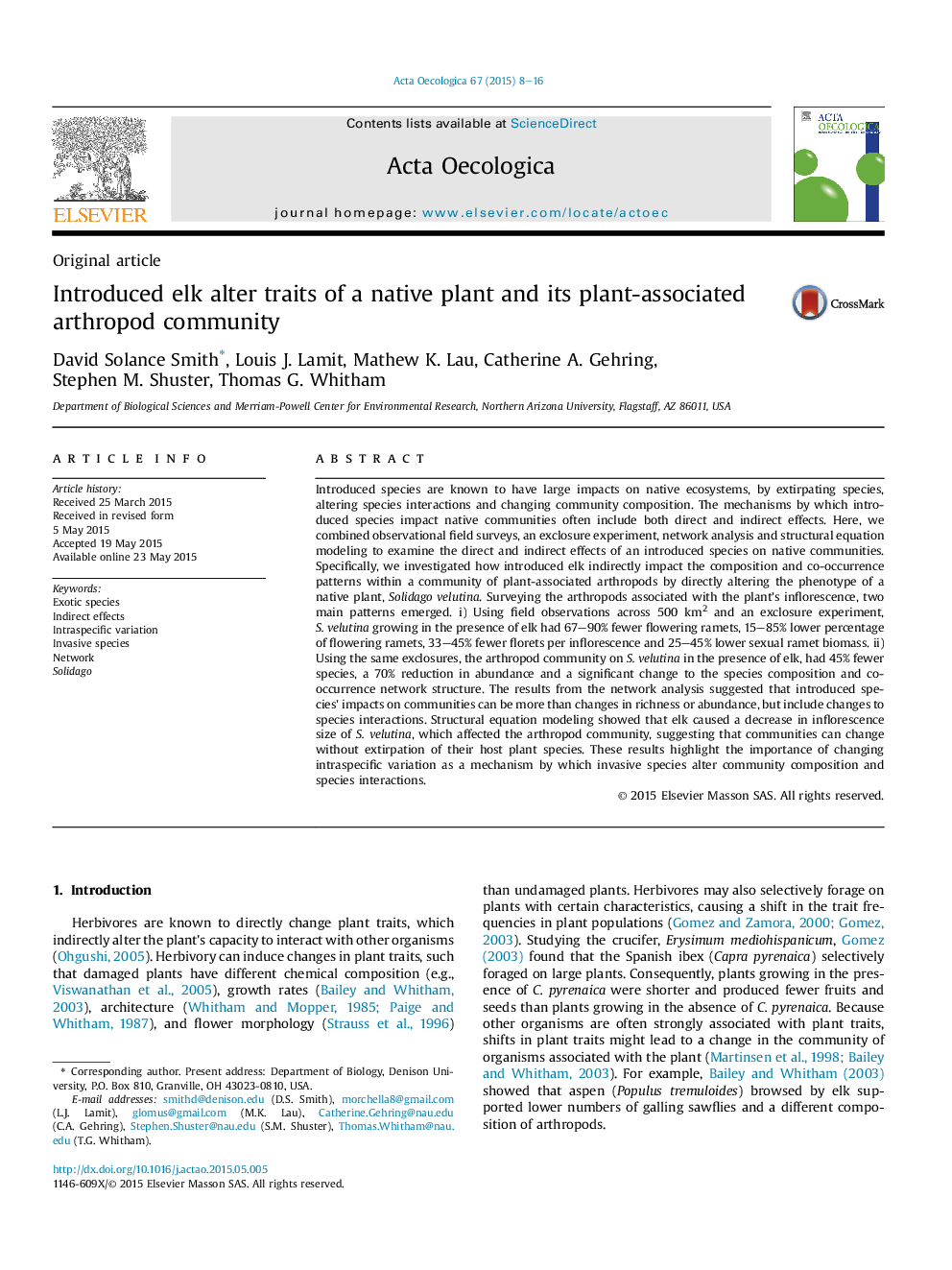| Article ID | Journal | Published Year | Pages | File Type |
|---|---|---|---|---|
| 4380815 | Acta Oecologica | 2015 | 9 Pages |
•We studied the effects of exotic elk on a native plant and its arthropod community.•Plants in the presence of elk had fewer flowering ramets and smaller inflorescences.•Plants in the presence of elk supported lower arthropod richness and abundance.•Arthropod community composition differed in the presence and absence of elk.•The arthropod network structure also differed in the presence and absence of elk.
Introduced species are known to have large impacts on native ecosystems, by extirpating species, altering species interactions and changing community composition. The mechanisms by which introduced species impact native communities often include both direct and indirect effects. Here, we combined observational field surveys, an exclosure experiment, network analysis and structural equation modeling to examine the direct and indirect effects of an introduced species on native communities. Specifically, we investigated how introduced elk indirectly impact the composition and co-occurrence patterns within a community of plant-associated arthropods by directly altering the phenotype of a native plant, Solidago velutina. Surveying the arthropods associated with the plant's inflorescence, two main patterns emerged. i) Using field observations across 500 km2 and an exclosure experiment, S. velutina growing in the presence of elk had 67–90% fewer flowering ramets, 15–85% lower percentage of flowering ramets, 33–45% fewer florets per inflorescence and 25–45% lower sexual ramet biomass. ii) Using the same exclosures, the arthropod community on S. velutina in the presence of elk, had 45% fewer species, a 70% reduction in abundance and a significant change to the species composition and co-occurrence network structure. The results from the network analysis suggested that introduced species' impacts on communities can be more than changes in richness or abundance, but include changes to species interactions. Structural equation modeling showed that elk caused a decrease in inflorescence size of S. velutina, which affected the arthropod community, suggesting that communities can change without extirpation of their host plant species. These results highlight the importance of changing intraspecific variation as a mechanism by which invasive species alter community composition and species interactions.
